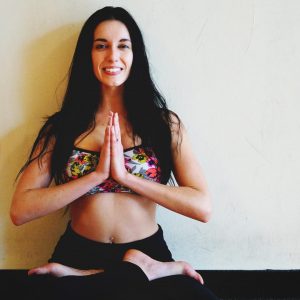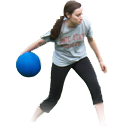
How to Get Started With Yoga
It wasn’t too long ago that yoga was a relatively unknown activity practiced mainly by New Agers and people with hippie parents. But times have changed, and now it seems like everyone’s doing yoga: your sister, your nephew, your grandma — even football players and prison inmates. And there are good reasons for that. From an improved physique to a happier mood, the benefits of yoga are too plentiful for one to ignore. So, what are you waiting for?
Benefits of Yoga
First, why should you start a yoga practice? For starters, regularly practicing yoga is a good way to improve your overall health and well-being. Osteopathic physician Natalie Nevins explains that yoga can reduce chronic pain from arthritis and headaches and help relieve insomnia. It also can increase flexibility and muscle strength, help with weight loss, improve athletic performance, prevent injury, regulate metabolism and improve heart health. A study presented at the American Society of Hypertension 2013 Scientific Sessions found that practicing yoga lowered resting blood pressure in a group of adults with mild to moderate hypertension. Another study, published in the Journal of Alternative and Complementary Medicine in April 2014, also confirmed the effect in prehypertensive school children. So whether you’re headed to a class by yourself or have your little one in tow, you can both reap the benefits.
Yoga Is for Everyone
“I can’t do yoga because I’m not flexible enough,” is a common complaint yoga teacher Lauren McKee hears from new students. But it’s also wrong. “That’s the reason you would come to yoga. Most of us aren’t inherently flexible or inherently able to balance on our hands, but with time and patience, it’s like anything else. You can develop flexibility just like you can develop strength.”
Yoga teacher Cara Maclean says it’s easy for beginners to become discouraged because of the images they see in popular culture depicting models in challenging poses. But, she says, yoga is for everyone. “Whether you’re flexible or not, just go into a yoga class and stick with it,” she says. “You’ll see progress immediately, if you allow it.” Instead of focusing on all the physical ways you think you don’t measure up, allow yourself to let go and reap the mental and emotional benefits of your practice.
Try a Vigorous Class Like Power or Bikram Yoga
Finding the style of yoga that appeals to you and helps you meet your goals is key to ensuring you stick with your program. If you’re an athletic type or you’re interested in losing weight, the more vigorous types of yoga might appeal to you. “Power yoga is a style of yoga that you can expect to be pretty vigorous. You’re going to be moving, you’re going to be sweating,” says Seattle-based yoga teacher Lauren McKee. It’s sometimes practiced in a heated room, which ups the challenge even more. Bikram yoga, which incorporates the same 26 poses into every practice, is also practiced in a heated room. Although it’s quite challenging, McKee says it’s good for beginners because the postures are easy to learn and repeated in every class. Just make sure you stay hydrated and don’t overdo it in your first class.
Go Traditional with Ashtanga or Kundalini Yoga
If you’re looking for a less vigorous — but still challenging — yoga experience, you can opt for the traditional styles that originate from India. Ashtanga yoga has several progressive series of postures. The linking of breath and movement — vinyasa — is crucial in this practice. As the poses get progressively more advanced as you move through the series, this practice will increase your heart rate and have you sweating. Another traditional style, Kundalini, is also referred to as “yoga of awareness.” Through a combination of meditation, mantras, physical poses and breathing techniques, this ancient style of yoga endeavors to “awaken the full potential of human awareness in each individual,” according to the Kundalini Research Institute. Each class includes kriyas, which are exercises and patterns of movement meant to achieve a certain result, depending on the class.
Mellow Out with a Meditative or Restorative Class
If you’re seeking out yoga as a way to relax or if you have an injury, meditative or restorative yoga might be for you. In Yin yoga, practitioners hold poses for long periods — usually three to five minutes. Postures are mostly passive, aimed at stretching the connective tissue around joints to make it longer and stronger, according to Yin yoga teacher Paul Grilley. And for calming the mind and body, restorative yoga is another great option. This type of class uses props and long hold times in passive postures to help the body completely relax and open. According to restorative yoga teacher Judith Hanson Lasater, Ph.D., restorative yoga helps relieve chronic stress, stimulate and soothe the organs and balance opposing energies in the body.
What’s the Deal with Hot Yoga?
Some like it hot, and that goes for their yoga practice as well. Bikram, hot Vinyasa, power yoga and hot Hatha are just a few of the classes you might see on a studio schedule. Some of the purported benefits of practicing in a hot room include lubricating the joints and muscles and detoxifying the body by producing excess sweat, but none of the claims have been scientifically proven. Ultimately, whether you choose a hot style of yoga depends on your preferences. “If you’re someone who knows that you just do not like the heat, I would say stay away from a hot yoga class,” says yoga teacher Lauren McKee. If you do try a class, pay attention to your body’s signals, drink plenty of water and stop to rest if you feel dizzy or lightheaded.
Find a Place to Practice
You can practices yoga can almost anywhere — at a studio, in your living room, in your office, in a park or wherever you feel you can move and breathe without any interruptions for a period of time. Still, most people choose to attend group classes in a studio or gym. Having a teacher to guide you, especially when you’re a beginner, can help you more quickly and easily learn the poses while also avoiding injury. But cost can sometimes be prohibitive. Bay Area yoga teacher Cara Maclean says it’s perfectly feasible for new students to practice at home with the variety of resources available on the Internet. Several online subscription services offer virtual classes taught by certified teachers for an affordable monthly fee.
Choose a Studio
Because most studios offer monthly rates or class packages, it’s often more cost-effective to attend one studio. When choosing a studio, there are a few things to take into consideration. First, consider the location: If the studio isn’t nearby, it’s less likely you’ll make it to class regularly. Second, look at class offerings. Does the studio offer the style or styles of yoga you’re interested in taking? Class times are another important factor. Are the classes you want to take offered at times that fit your schedule? “What I would recommend for a beginner is to find a studio that has a beginner series,” says yoga teacher Cara Maclean. Not all studios will offer these classes, so call ahead or visit your chosen studio’s website.
Practice at Home
If attending a yoga studio regularly isn’t in your budget, that doesn’t mean you can’t start practicing yoga right now. Identify a space in your house (whether a whole room or a corner of a room) where you can practice uninterrupted and without running into furniture or walls. Close the door or ask your family members to avoid your yoga space during the hour of your practice. If you’re using online classes, set up your laptop or hook up your TV to the Internet. Commit to your practice and worry about other things — like what you’ll make for dinner — after your session is over.
Equip Yourself for Success
As with most activities, starting a yoga practice is an investment, but it can be as little or as much as you want. Wear light, comfortable clothing that allows you to move freely. A yoga mat provides cushion on hard studio floors and grip for your hands and feet, which is especially helpful for beginners, says yoga teacher Cara Maclean. Bolsters, blocks and straps are other useful props that are usually provided by studios, but you can also purchase them for your home practice.
Bolsters provide extra support and take pressure off limbs in challenging and restorative postures. Blocks and straps can make certain poses easier for less-flexible practitioners, helping them achieve the correct shape of the pose without overextending. If you’re practicing at home, you’ll need to buy these items or get creative. You can use a pillow as a bolster, a thick, hardback book as a block or a towel as a strap.
Cultivate Beginner’s Mindset
Starting a yoga practice, whether at home or at a studio, can be an intimidating, awkward and humbling experience. “In the beginner’s mind, there are many possibilities, but in the expert’s, there are few,” writes Shunryu Suzuki in “Zen Mind, Beginner’s Mind.” To have a beginner’s mind, you must cultivate an attitude of open-mindedness, a lack of preconceptions and an eagerness to learn — whether you’re just starting a yoga practice, or you’ve been practicing for several years. Allow yourself to notice the discomfort in your first class or in a pose you find challenging, then let it go and resume your breathing. Don’t compare yourself to others in the room, advises yoga teacher Lauren McKee. “Realize that everyone was new at one point. Give yourself the time to get there.”
Roll Out Your Mat
When you go to your first class, yoga teacher Lauren McKee recommends arriving a little early and talking to the teacher. “Most teachers want to make you grow as a student, so if they’re a good teacher, they should be able to give you some helpful hints before you delve in.” Most importantly, take note of the enjoyment you feel while moving on the mat and all the ways it improves your life off the mat.
By Jody Braverman
The Arena District Athletic Club is more than just a gym, it’s a premier fitness facility located in the heart of the Arena District in downtown Columbus. We provide convenience and quality, featuring top-of-the-line equipment, top-notch personal trainers, spa-like locker rooms and a wide variety of free group fitness classes daily including Cardio, Spinning, Barre Fusion, Yoga, Boot Camp and more. We offer free 2-hour parking and convenient contract-free memberships, to fit your healthy lifestyle needs. Don’t just join, belong.





